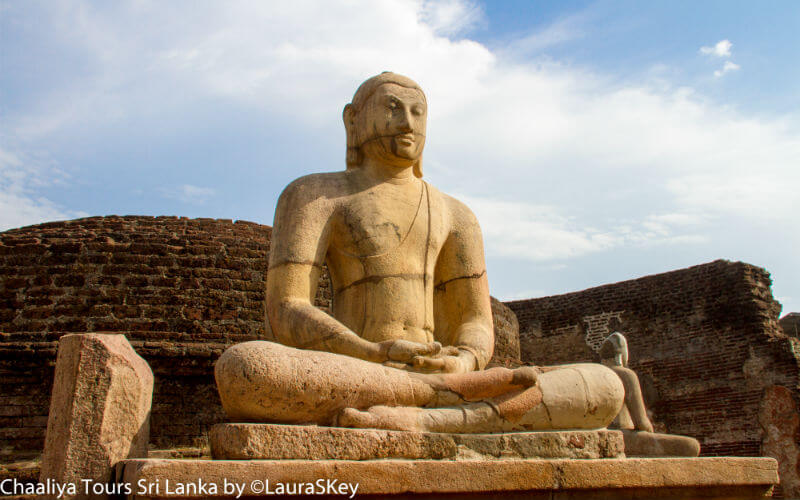Polonnaruwa, the beautiful garden city

A visit to the archaeological site of Polonnaruwa is one of the most interesting and compelling experiences that one can have in Sri Lanka, and is a must for the travellers interested in. No doubt, it can be counted among the largest and best preserved archaeological sites in the world and, not surprisingly, it has been declared a World Heritage Site. It is part of the legendary cultural triangle of the country.
Among its sunny ruins, so vast as to be preferably visited by bicycle, one feels the majesty of this ancient medieval city, which became the capital after the fall of Anuradhapura and remained so for over two centuries. One soon understands why it was called the beautiful garden city: the royal palace, houses, temples and stately homes are scattered over a vast green area. The precious engravings, bas-reliefs, statues, and all that has survived to now, make Polonnaruwa wonderful and intriguing overview of what has gone before us.
The grandeur of this kingdom can be realized not only by its incredible extension but also by the monumental architectural works that the different kings erected during their reigns.
One king above all, king Parakramabahu, led Polonnaruwa to its height of splendor, transforming it into one of the largest capitals of the Sinhalese kingdoms. In the 12th century, Parakramabahu built very large buildings, gardens and a huge artificial lake that today is still the largest man-made rainwater tank in Sri Lanka.
The deep religious, cultural soul of Polonnaruwa has survived over time and even after the city losing the status of capital, has retained its importance as a pilgrim’s destination. The magnificence of the site and the guarded masterpieces are a treasure for Sri Lanka, while the fusion among nature, animals and culture adds a refined touch for visitors.
Among the many most significant monuments of the site are: the Gai Vihara, which includes four large Buddha statues all carved from a single block of granite and considered one of the highest display of Sinhalese sculpture, the Royal Palace and the Council Chamber, the Vatadage, a circular structure which houses a relic and also the Rankot Vehera a stupa in excellent condition which, with its height of 54 meters, appears to be the largest in Polonnaruwa and the fourth largest in Sri Lanka.


